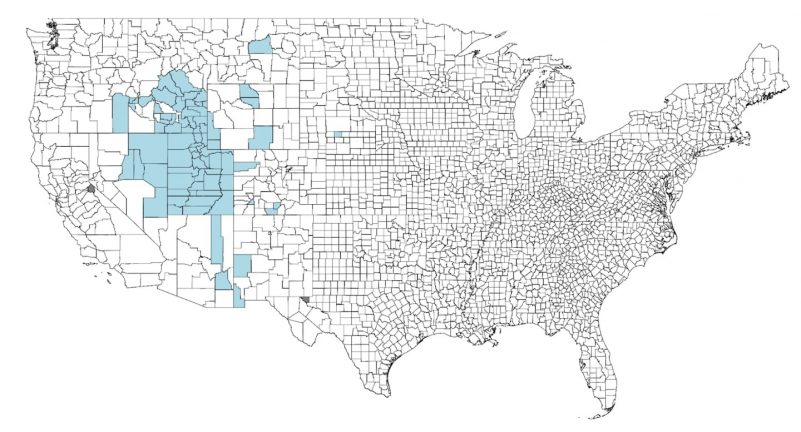
The B.H. Roberts Foundation recently conducted a large representative survey of current and former Latter-day Saints. It gathered information on basic demographics, beliefs, and practices, and also quantified philosophical differences between these two groups.
The foundation, which is an independent organization not affiliated with The Church of Jesus Christ of Latter-day Saints, published some of the results in three articles in the Deseret News.
Summary of the article “We sent out 80,000 postcards to Latter-day Saints in the U.S. Here’s what we learned.”
- The study focused its research on the “Mormon Corridor” because it represents a major cultural hub of the faith. This consists of the areas of Utah, Idaho, Nevada, Arizona, and New Mexico that were settled between 1850 and 1890 by members of the Church.
- 71% of Latter-day Saints in the “Mormon Corridor” reported that they attend church weekly, while 65% of those outside the area state that they attend weekly.
- 90% of members believed that “the Book of Mormon is a true record of ancient people who actually existed.”
- 85% agreed that “Joseph Smith literally saw God the Father and Jesus Christ.”
- 10% agreed on some level that the Church should solemnize same-sex marriages in the temple.
- The divorce rate for temple marriages is about three times lower than the national divorce rate.
Summary of the article “New survey shows strong cross-generational faith among Latter-day Saints.”
- The responses fell into two clusters.
- The first cluster is made up of the majority (about 80%) of the members surveyed, which had very similar answers that align with traditional views and practices within the faith. These respondents have a strong belief in God, in the veracity of the Book of Mormon, and in the institution of the Church. They support the Church’s teachings on marriage and the priesthood. They are also active in their participation in the faith.
- The second cluster is made up of about 20% of respondents, who reported less certainty about the existence of God, Joseph Smith’s First Vision, and the Book of Mormon. This second group also reported less engagement in their level of personal devotion and participation in the faith, while still identifying as Latter-day Saints.
- The two clusters were not separated along generational lines. Both groups included older and younger members.

Summary of the article “Applying Moral Foundations Theory to current and former Latter-day Saints.”
- Among former members:
- 44% do not believe in God or they aren’t sure if there is a God and they don’t believe there is a way to find out.
- 29% say that they either know God exists or tend to believe in God.
- 26% pray at least once a week.
- 70% consider themselves unaffiliated with a religion, though two thirds claimed to have membership records with the Church.
- Former Latter-day Saints are slightly younger in age but similar in gender distribution as current members.
- 20% of former members are married to believing members of the Church and 30% are married to former members.
- Former Latter-day Saints are twice as likely to have been divorced than Latter-day Saints generally.
- Former members are nearly four times as likely to identify as LGBTQ.
- Former members are more than four times less likely to have had their marriages sealed in the temple when compared with current members.
- Former members responded as to their reasons for leaving the Church.
- Conflicts with local leaders and Word of Wisdom issues were among the least important considerations.
- Historical issues related to Joseph Smith, the Book of Mormon, and the treatment of black people in the past were said to be the most important reasons. Policies related to LGBTQ people and women were also cited as important.
- Respondents were also asked fundamental questions related to how they perceived right and wrong, using the model known as Moral Foundations Theory, which measures the moral drives that help shape people’s political, moral, and social outlooks.
- Current members were comparable to politically moderate and conservative Americans, with the exception of the Purity/Sanctity scale, which Latter-day Saints value significantly more than any other political demographic.
- Former members are most similar to politically liberal Americans, but are significantly less likely to value Ingroup/Loyalty.
- The Moral Foundation differences between current and former members suggest a change in moral values associated with a departure from the Church. While conventional thinking is religion drives one’s partisan worldview, political scientists have found that partisan associations can also drive religious affiliation or disaffiliation.
Read the three articles referenced above to learn much more about the findings.

Interesting results. Since my family has roots in the earliest time frame, it still has a degree of those who have kept the faith and those that have left the faith. Free agency has it’s own price.